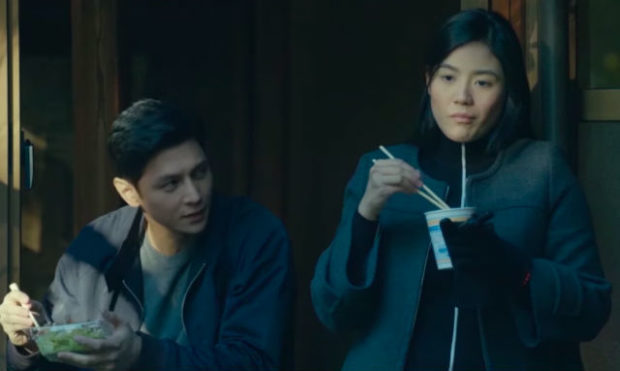The idea that the “The Missing” is the only horror entry in the first Summer Metro Manila Film Festival (SMMFF) is terrifying for its director, Easy Ferrer.
“Those who will go to the cinemas because they love horror films will have no choice but to see this one, so my movie has to be good enough for them. It has to satisfy them,” he told Inquirer Entertainment on Tuesday afternoon.
The SMMFF was supposed to run from April 11 to 21, but was postponed after the government ordered several areas in the country locked down to help stop the spread of the new coronavirus disease (COVID-19). “The Missing,” which features Ritz Azul, Joseph Marco and Miles Ocampo, is produced by Regal Entertainment.
“I’m also scared because I know that of all the horror films that were submitted, it’s my film that got picked. I feel the pressure because Regal is a brand known to churn out hit horror films like the ‘Shake Rattle and Roll’ series,” Ferrer explained.
But while it may be titled “The Missing,” the movie sure has ample new elements to interest fright flick fanatics, the director declared.
First of all, it was shot in the little-known prefecture called Saga, on the island of Kyushu in Japan, Ferrer pointed out. This is also the area where “Between Maybes” was filmed, “but during the spring season, when the sakura are in full bloom,” explained Ferrer, who was the assistant director of the acclaimed Gerald Anderson-Julia Barretto starrer.
“This time, we shot during autumn, when all the leaves were bloody red. I have yet to see a local film with a monochromatic palette. We chose cool colors to reflect the weather there,” he explained.
Ferrer also classified “The Missing” as J-horror, a genre generally known to have “sensibilities, visuals, scare tactics, story flow and acting that are different from traditional Western horror representation,” he pointed out, citing the original versions of “The Ring” and “The Grudge” as examples.
“’Di rin aligaga ang characters,” he said. “This means they are shown in the movie to have normal lives, even while being pestered by ghosts. This is unlike many Hollywood horror flicks wherein, once a character moves into a haunted house, the focus will shift to the haunting. The characters here are less fidgety, if not stoic. Their minds aren’t focused on the horrific things happening in the story.”
The location is the 150-year-old ancestral home called Maeda Residence in the small seaside city of Imari. In spite of it being a national heritage site—located inside a 3,300-sqm compound—it is a private property, and its interiors are not open to the public. The house is like a maze, Ferrer added.
“I already felt goosebumps as soon as we entered the compound. It’s really the perfect location for the movie,” Ferrer recalled. “Already, we were warned by the caretaker that we should first perform some purification rites before shooting, and that there were areas in the house that were off limits especially during nighttime.”
Just like in Ferrer’s debut movie, “Finding You,” where the lead character suffers from a particular mental health problem, Azul’s character, named Irish Valerio, is experiencing post-traumatic stress disorder (PTSD).
“Irish is involved in architecture restoration. She has a background in history and architecture. She is suffering from a traumatic experience involving her younger sister. It doesn’t help that her mom is blaming her for what had happened to her sister. It just doesn’t show, but she has been quietly suffering for a year now,” Ferrer explained.
Irish gets a job offer from her ex-boyfriend, Job Arca (Marco). She goes to Japan to join him and his intern (Ocampo) who, unknown to them, has a connection to the owner of the ancestral home they were commissioned to restore.
“All throughout the film, you would feel that Job has resentment toward Irish for dumping him, making you think that he might be planning revenge on her,” Ferrer said. INQ
